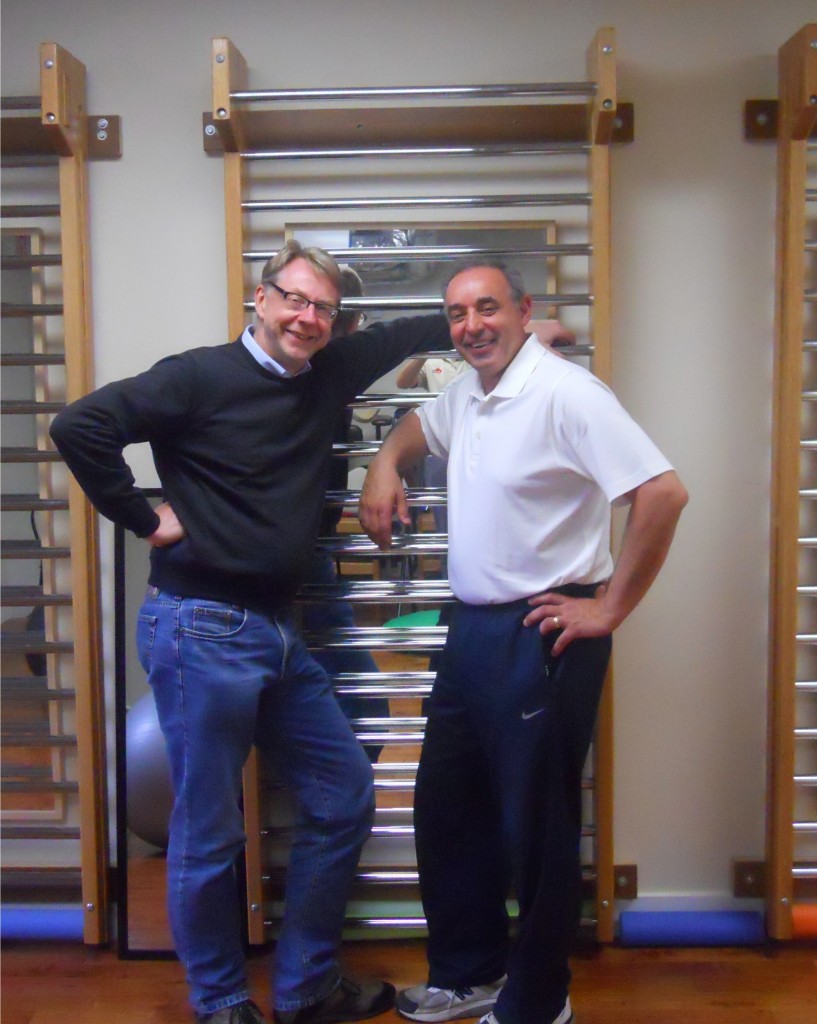
Schroth Workshop in Canada
Techniques and programs for health (exercise, fitness, dieting, nutrition) are always evolving. Scoliosis treatment is no different. It was my great pleasure to participate in a Schroth workshop in Toronto, Canada to reinforce my skills, with my good friend Dr. Hans-Rudolf Weiss of Gensingen, Germany. I have known Dr. Weiss since mid-April 2002 when he evaluated my daughter at the Asklepios Clinic in Bad Sobernheim, Germany. That first encounter with the Schroth method proved to be a life-altering experience for me. Although I first learned the Schroth method in Germany, 2002, participating in the Schroth Workshop in Canada was an inspiring experience!
It was incredible to witness the determination, focus and positive attitude of all the adolescents who participated in the program. Over the years, I’ve been lucky enough to be on the ground floor in regards to the Schroth improvements Dr. Weiss is always working on to keep Schroth Best Practice current! I have been so fortunate to have learned much of the new version of Schroth before attending the Schroth Workshop in Canada. This occurred on different visits to Germany or when Dr. Weiss and I were in attendance at the same conferences. However, during this particular workshop it was great to reinforce my skills and have the chance to interact with other Schroth practitioners who attended. When Dr. Weiss’s program was in its early stages, he called it Scoliologic Best Practice. Fast forward to a few years later and he has adopted the name Schroth Best Practice. I am proud to have played such a big role in introducing these Schroth advancements to my patients here in the United States. Although this post is dated, we are leaving it as published content to help people understand that Scoliologic is now Schroth Best Practice. Whatever the name, it is all based on the original Schroth method of Dr. Weiss’s grandmother Katharina Schroth.
So, what are the benefits of this updated Schroth method program? The Schroth Best Practice program has been streamlined. Patients are able to learn in less time. For some patients, home exercise session time may be reduced a bit (20 min vs. 30 min) depending on the degree of scoliosis. This more efficient version of the Schroth method is possible when the patient understands and grasps the concepts of Physio-logic (exclusive to Schroth Best Practice), scoliosis specific ADL’s –auto-correction techniques and postural modifications, and 3-D Made Easy® as an adjunct to a Schroth program. Fortunately, these are all easy to incorporate into daily life.
It is important to understand how the Schroth Best Practice principles combine with Schroth exercises as an adjunct component for Schroth scoliosis management. To understand, think of it like this, if a patient practices their Schroth method scoliosis exercises for 20 to 30 minutes daily, but for the balance of the day they resume their habitual posture and sit, stand or lie down leaning into their curve, the exercise practice won’t be as effective as it can be if they are also integrating postural corrections based on their curve pattern. This is the added advantage of Schroth Best Practice. It offers innovative add-ons and postural modification techniques that original Schroth doesn’t. When a patient works on their posture throughout the course of the day, meaning maintaining the corrective or overcorrected spinal alignment for their particular curve(s) pattern, then it’s more likely they will be able to achieve a positive outcome in the fight against scoliosis. For some adolescents, this could be the difference between curve stabilization and curve reduction.
A breakdown of the Schroth Best Practice program as we use it at Scoliosis 3DC® is as follows:
- Patient Education- each patient must understand their curve(s), anatomy
- Physio-logic – corrections in one plane
- Activities of Daily Living for Scoliosis(ADL’s)
- 3-D Made Easy
- Schroth Exercises for one’s particular curve class
- Spinal Mobilizations for Scoliosis
Updated March 13, 2019

